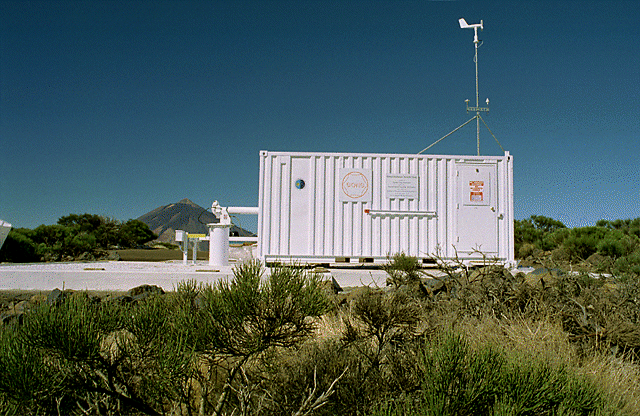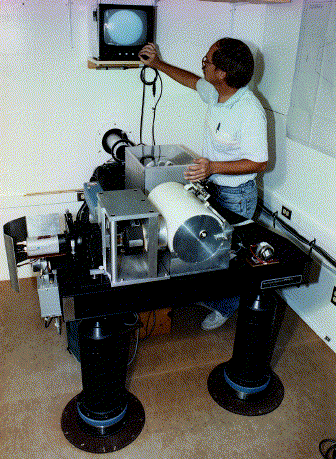
The six observatories in the GONG network
When one measures solar oscillations, one proceeds by taking a sequence of images of the oscillation pattern at fixed time intervals. The shorter the time interval between the images, the easier it is to identify the oscillations. Unfortunately the Sun is only in the sky for about half of each day at best so one cannot avoid large holes in this time series. And the more (and bigger) the holes in the time series, the more difficult is gets to separate all the individual oscillations.
In order to avoid this problem researchers have established networks of small, partly automated observatories with a suitable distance in longitude between them. In this way there will always be at least one observatory for which the Sun is in the sky. The six observatories that are part of the GONG (Global Oscillation Network Group) network lie around the globe at almost equal distances :

The six observatories in the GONG network
Of course it is impossible to avoid having bad weather, but all in all the network is a big success with a total time-series coverage of 93%. The individual solar telescopes consist of a system of mirrors that deflect the light into a small building where the instruments are.

The
GONG observatory at Observatorio del Teide, Tenerife (Canary
Islands). The tube on the left side leads the light, by a system of
mirrors, into the instruments that are set up in the interior.
 On the right we look into the small
building, where the instruments are set up. With an interferometer
the Doppler-shift is measured ;
from this the velocity across the solar surface is inferred.
On the right we look into the small
building, where the instruments are set up. With an interferometer
the Doppler-shift is measured ;
from this the velocity across the solar surface is inferred.
The BiSON (Birmingham Solar Oscillations Network) project also has six observatories, most of which are automated. As is explained above the GONG observatories measure the motions on the solar surface caused by the oscillations. The BiSON observatories do so as well, but unlike the GONG network they measure an average velocity over the solar surface (the Sun is observed as if it were a star). The measurements therefore are sensitive only to oscillation patterns with very big wavelengths : all smaller-scale patterns are suppressed by being averaged. The two techniques for GONG and BiSON are therefore complementary. The technique used by BiSON yields sensitive measurements of the oscillations of the lowest degrees, which provides us with information about the solar core (look here for a description of wave propagation inside the Sun), while GONG measures oscillations of all degrees but with somewhat lower accuracy.
On the page with Results you can see examples of what can be discovered with the methods used today.